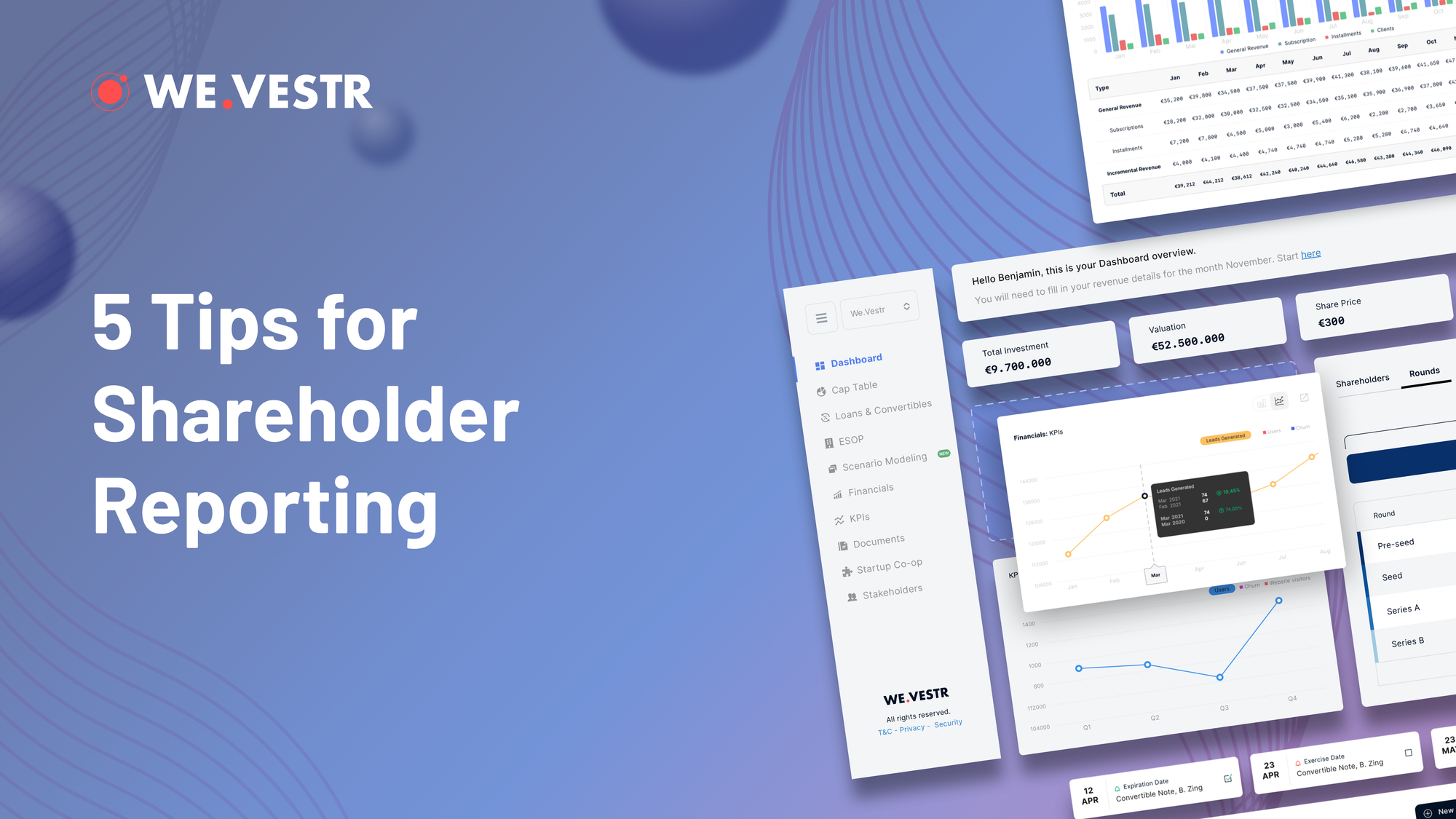5 Tips for Shareholder Reporting
Check out our tips for founders who are preparing for their first shareholder meetings.

Tip 1: Clearly Set Expectations
- The most common schedule for shareholder reports is quarterly, but can be more frequent for smaller startups.
- Clearly communicate how often you’ll be reporting, who will be included, and what data will be included.
- Encourage collaboration between you and those who receive your reports.
Tip 2: Make it Easy for Shareholders to Access
- Shareholders often like to reference past reports, so make it easy for them to find the data. Hint: emails get lost, and PDFs/Slide Decks get deleted.
- Save time and back-and-forth by consolidating your reports into a single, secure environment that shareholders have access to.
Tip 3: Daily Summaries vs. Trend Data
- Reporting on day-to-day activities is fine, so long as it’s concise and in an overview format. This can help shareholders get a view into the daily workings of the company.
- Larger financial, marketing, sales and overall trends should be separated out so that shareholders can skip to the KPIs they’re most interested in.
Tip 4: Good or Bad, It’s All Relevant
- Don’t hide poor performance or negative data. If you do and it comes out, you’ll damage investor trust.
- Remember that your shareholders can help you, so showing pain points often can lead to greater collaboration and advisory.
Tip 5: Always Provide Takeaways & Next Steps
- Reporting should signal your overall focus, including key takeaways for shareholders as well as actionable next steps for them to review.
- Try to align reporting with the overall vision, that way shareholders can see that you're executing to reach the larger goal.
